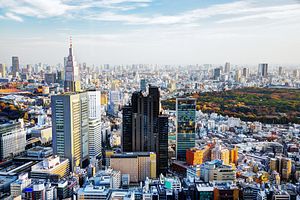With a new year comes a fresh round of global city rankings. How will Asia perform amidst a stubbornly anaemic economic recovery in the West? The usual suspects figure to maintain their standing. In the 2014 Global Cities Index, Tokyo (4), Hong Kong (5), Beijing (8), Singapore (9) and Seoul (12) affirmed Asia’s relative economic health. In the Mori Foundation’s Global Power City Index, released in January, Asian cities occupied four of the top nine spots, and performed similarly well in the Economist Intelligence Unit’s Global City Competitiveness Index. Jakarta and Manila topped A.T. Kearney’s 2014 Emerging Cities Outlook index.
While useful, such indices can also be misleading. The term global city – notwithstanding its definitional ambiguity – is now synonymous with financial capital. This partially explains the high rankings of Tokyo, Hong Kong and Singapore. However, the term global is best ascribed to cities with importance in the dominant global industry of the time (currently finance, and previously trade, manufacturing, and resources). Because of their manufacturing prowess in bygone industrial epochs, London and New York have long been considered global by both casual and formal measures, and are still the only two “Alpha++” cities as designated by the Globalization and World Cities Research Network. More notable, however, is the adaptability that allowed both cities to restructure for emerging industries and thereby consistently maintain global status.
Long-term global relevance, however, is elusive for most cities. Manchester and Detroit (manufacturing) or Venice and Amsterdam (trade) have been global only during eras in which each had a competitive advantage in the dominant industry of the day. Those currently enjoying locum tenens global status include Singapore (finance), Los Angeles (entertainment), and Sydney (commodities). Economic crises would unmask the true adaptability of these and similar cities; indeed, some survived after 2008 while others languished. The outlook for Asia’s major cities rests on their competitive position in the dominant industries of the near (10 years) and more distant (50 years) future. When derivatives and commodity trading relinquish sunrise status to biotechnology, nanotechnology, and alternative energy, the rankings landscape will change dramatically. Yet this may not matter.
A growing phenomenon is the failure of global city status to materially improve the lives of urban citizens at or below medium income. Over time, most non-Alpha cities will move in and out of global status for the reasons outlined above. Champagne corks will pop in boardrooms but life will continue as normal for the majority of citizens, and this is the problem. Local economic volatility impacts vulnerable urban populations. For example, property value fluctuations are spatially disruptive by uprooting households, lengthening commutes, and fragmenting communities. Furthermore, finance – the currently dominant global industry – generates fewer job opportunities for middle income residents than manufacturing would. Understanding the unique socio-economic challenges of cities with and without tenable global status may support the case for equity-based urban policy interventions and institutions that enable them.
Harvard researcher Susan Fainstein argues that global city status is linked with inequality. Her case studies of London, Tokyo and New York reveal common patterns in economic trajectory, with some contextual variation, that result from growth in professional services and finance. Despite equity concerns, some governments continue to unduly prioritize global status, she argues. This characterizes a corporately captured development focus, to the plausible neglect of social equity. Accordingly, socio-economic instability is hatched through local policy and perpetuated by the global ranking arms race.
Could this be the fate of Asia’s debutante cities, politically justified by the fleeting pride of global recognition? A yawning wealth gap in urban Asia is already generating discussion in policy circles. In a 2012 piece, Fainstein and co-author Norman Fainstein argued that the current state of cities, measured by spatial configuration and ethnic balkanization, embodies global capitalist forces re-interpreted by local institutional and cultural contexts. Despite some variation, patterns among many global cities are evident, principally the exclusion of lower classes from economic opportunity.
Asia has the benefit of learning lessons from Western cities further along the development curve. The inequality phenomenon was apparent in America’s mid-20th century urban redevelopment program. While more locally focused and funded than modern urban development through global capital, such programs ravaged marginalized communities in an effort to “cleanse” poverty. Ostensibly done in pursuit of economic development and competitive status, projects of the 1960s reflected a master-plan of class engineering in which highways steered wealthy suburban consumers towards redeveloped downtown cores. Dislocated populations were re-housed in Corbusian-style tower blocks, with the inevitable social problems largely ignored by policymakers. President Lyndon Johnson’s “war on poverty” began to resemble one on the poor themselves. The failure of this program was too colossal to ignore, and in the 1990s the Hope VI program replaced towers with urban homesteads resembling new urbanist communities. Two decades hence, the results are mixed; the chronic under-prioritization of social and community development has prevented such quasi-utopian visions from materializing.
Cities are a reflection first of the ability of their institutions to measure and actualize public will, and second of the content of that will. The current pursuit by many cities of global status serves the priorities of political and business elites. However, these cities often fail to plan for social and economic adaptability in unforeseen circumstances. Path dependence partially explains the success of New York and Tokyo, but for cities without such a path, can enlightened social policy beget economic adaptability? The trajectory of a liberally institutionalized city will change only when arguments promoting social equity win the marketplace of ideas. Now is the time for a new regime of global city rankings recognizing socio-economic mobility for citizens who are not direct beneficiaries of the global financial order. Asia has the opportunity to redefine city “power” in the 21st century, in a way that elevates the dignity of the urban resident. It is good policy, both social and economic.
Kris Hartley is a PhD candidate at the National University of Singapore.

































